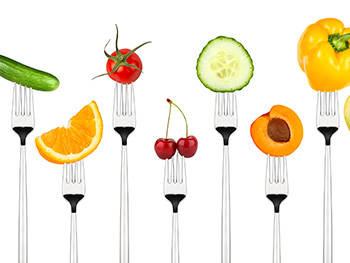More Health and Nutrition Bites
Related
More Availability Does Not Necessarily Increase Consumption
There's been a lot of talk about "food deserts" - those areas, often in low-income neighborhoods, that are marked by a distinct lack of access to fresh foods. Larger grocery stores that offer fresh produce and meats are few and often only accessed by long trips via public transportation.
Encouraging those on SNAP to make better food choices
Overweight and obesity continue to be a worldwide health problem, and those most likely to be overweight or obese tend to be those with lower incomes. There's been quite a bit of discussion about why that might be, with theories ranging from a lack of access to healthier foods to cost.
It may be nearby, but....
In an article in Appetite, a team at the University of South Carolina noted that people's perceptions of what is convenient to them in their neighborhood may be very different from something's actual, map-measured distance from their home.
Health & Nutrition Bites
Get the latest health and diet news - along with what you can do about it - sent to your Inbox once a week. Get Dr. Gourmet's Health and Nutrition Bites sent to you via email. Sign up now!
Using welfare benefits at farmer's markets

Back in September I wrote about a study that looked at ways to influence the types of foods people purchase when they are using SNAP (the Supplemental Nutrition Assistance Program, otherwise known as "food stamps"). The authors discovered, somewhat predictably, that those who were prevented from purchasing sugar-sweetened beverages (SSBs) and other unhealthy foods with their benefits might have reduced their intake of those foods by a small amount, but they didn't consume any more fruits and vegetables even when they were given financial incentives to purchase them.
Today's study approaches the issue of fruit and vegetable purchasing from another angle: that of supply (J Acad Nutr Diet 2017;117:58-68). In areas where larger grocery stores are in short supply and thus the access to fresh fruits and vegetables is limited, farmer's markets are being encouraged as ways to benefit not only the community members but also the farmers themselves. While farmer's markets have long been primarily cash-based, more and more often these days they are able to accept SNAP payments using EBT (Electronic Benefit Transfer) cards. When EBT cards are accepted at the local farmers' market, do SNAP recipients purchase more fruits and vegetables? And does that have any effect on the SNAP users' consumption of sugar-sweetened beverages?
The authors recruited the participants in their study from public health centers operated by the Los Angeles County Department of Public Health. Of the over 500 adult men and women who responded to the authors' survey and were recipients of SNAP benefits, about 200 were able to use their benefits at their local farmer's markets, while about 300 were not.
Along with questions about their estimated daily intake of fruits and vegetables, the participants also estimated their consumption of sugar-sweetened beverages such as sports drinks, energy drinks, lemonade or sweetened teas, and flavored coffee drinks or milks. They also estimated how far away the closest grocery store was from their home, how long it took them to get there, and by what means they went there: drive alone? Take the bus or metro rail? Walk?
Those who were able to use their benefits at the farmer's market consumed about 25% more fruits and vegetable per week than those who could not use their benefits at the farmer's market. On the other hand, it made no difference in how many sugar-sweetened beverages they consumed. What did seem to make a difference in SSB consumption, interestingly enough, was how they got to the grocery store: those who took the bus consumed 40% more sugar-sweetened beverages than those who drove alone. Those who walked to the grocery store consumed 36% more sugar-sweetened beverages per week than those who drove.
What this means for you
This cross-sectional study (a look at a single moment in time) almost raises more questions than it answers. It would appear that yes, people are more likely to purchase more fruits and vegetables if they can use their benefits at a farmer's market, but is the answer to reducing the amount of sugary beverages people drink buying everyone a car? Hardly.
First posted: January 18, 2017
